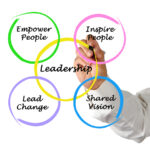
For organizations seeking a collaborative win-win approach to outsourcing, the Vested sourcing business model is worth consideration. It is the product of nearly 20 years of research at the University of Tennessee, beginning with a deep-dive funded by the United States Air Force on outcome-based outsourcing in 2003.
UT’s ongoing research into the world’s most successful outsourcing relationships, including those from Dell’s and the Canadian government, has uncovered five key rules for establishing win-win strategic partnerships that work collaboratively to achieve business outcomes. When a company and its outsourcing partner follow these rules they become vested in each other’s success: A win for the buying company is a win for the service provider.
The model offers a significant shift away from the transaction-based model commonly used in IT oursourcing arrangements, and its rules resolve several structural flaws that can emerge in transaction-based and managed servicesagreements.
For example, a buying organization might want “outcomes,” but the contract spells out dozens or even hundreds of service level agreement metrics instead. The buying organization might also want “innovation,” but the contract with the supplier has an 800-page Statement of Work with exacting details on how the supplier should perform each of the activities in scope. Or it might want the supplier to implement “efficiencies” while spelling out a transactional pricing scheme that inherently incentivizes the supplier to perform more transactions.
Instead, the Vested sourcing model refocuses business partnerships from a “what’s-in-it-for-me” transactional approach to a highly collaborative “what’s-in-it-for-we” model that promotes (and rewards) the parties when they collaborate. For example, instead of negotiating who will bear the risk of inflation, the parties embrace the fact that inflation is a reality of business and collaborate to identify and invest in operational efficiencies to mitigate the risk of inflation.
The following five Vested rules might sound simple, but UT research has found that most companies fail to follow them in an effort to the refocus on the outsourcing relationship on mutual success. Continue reading






